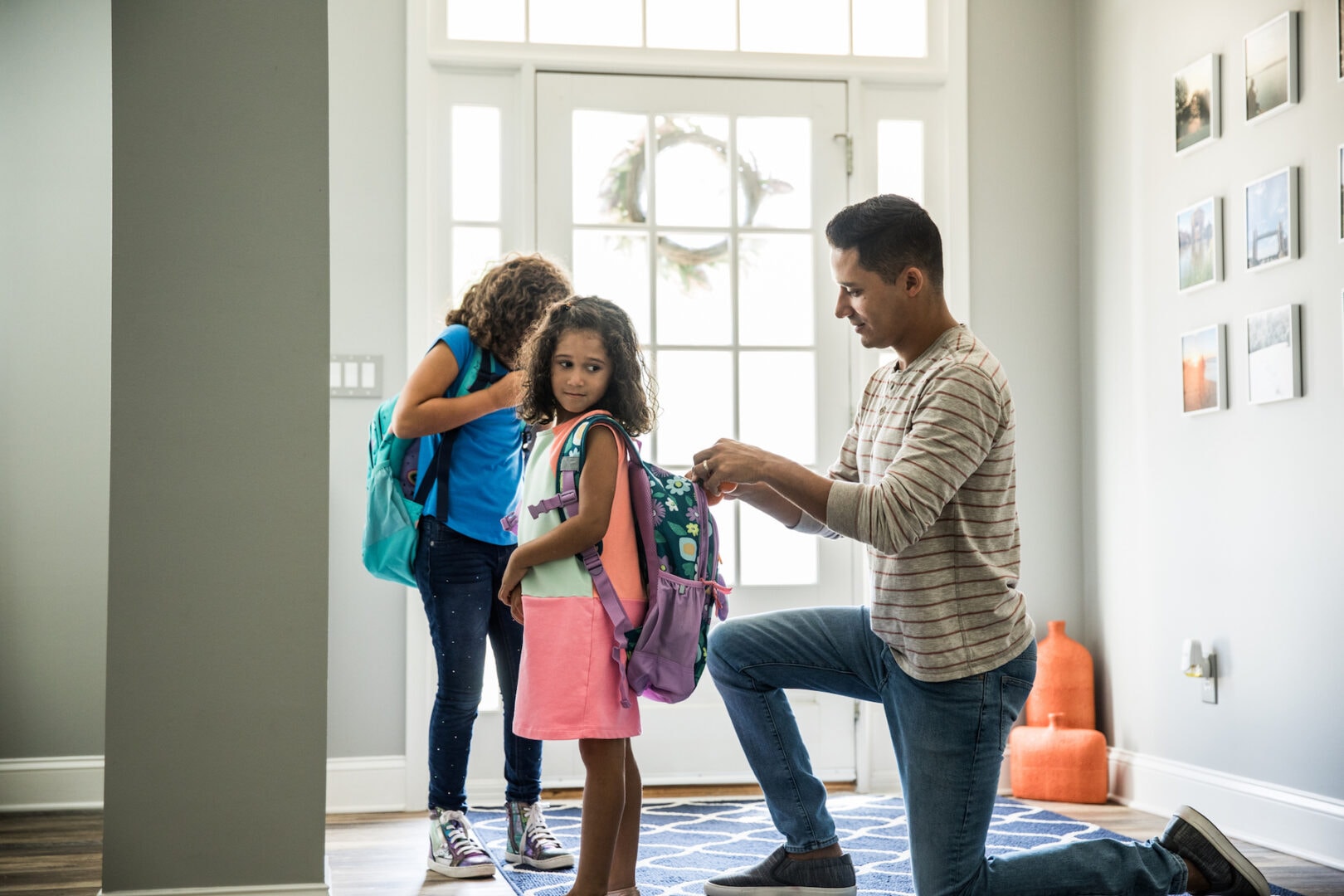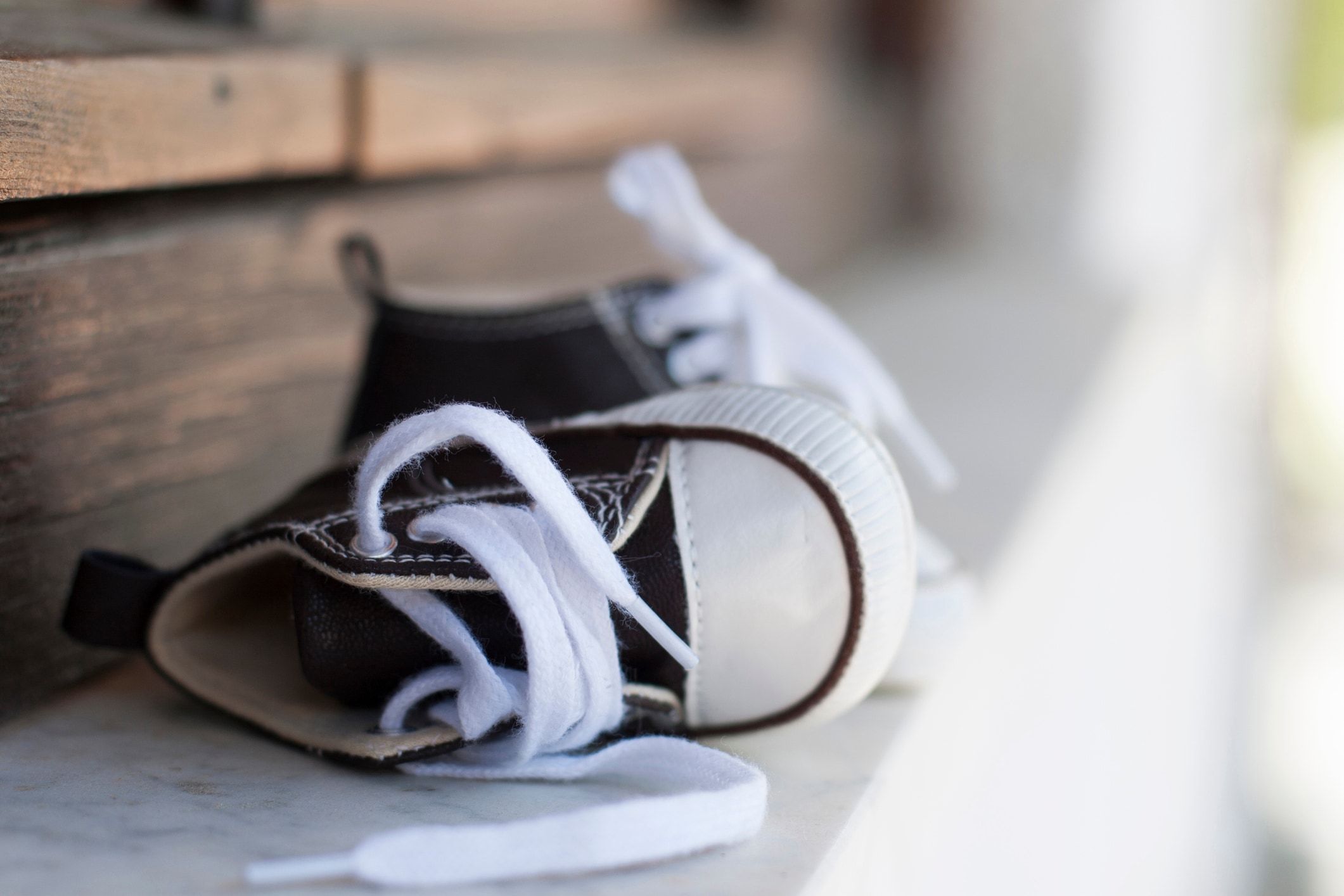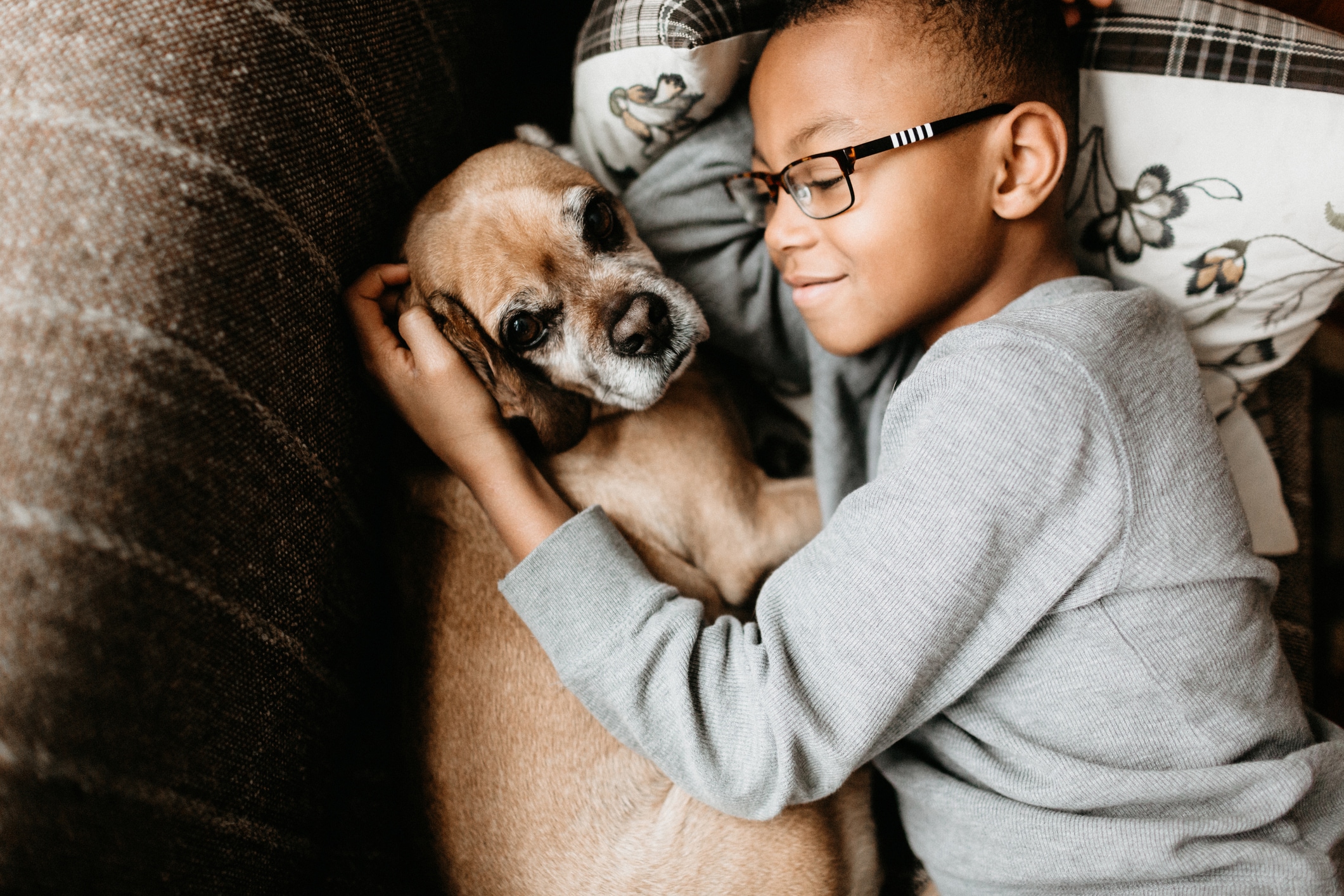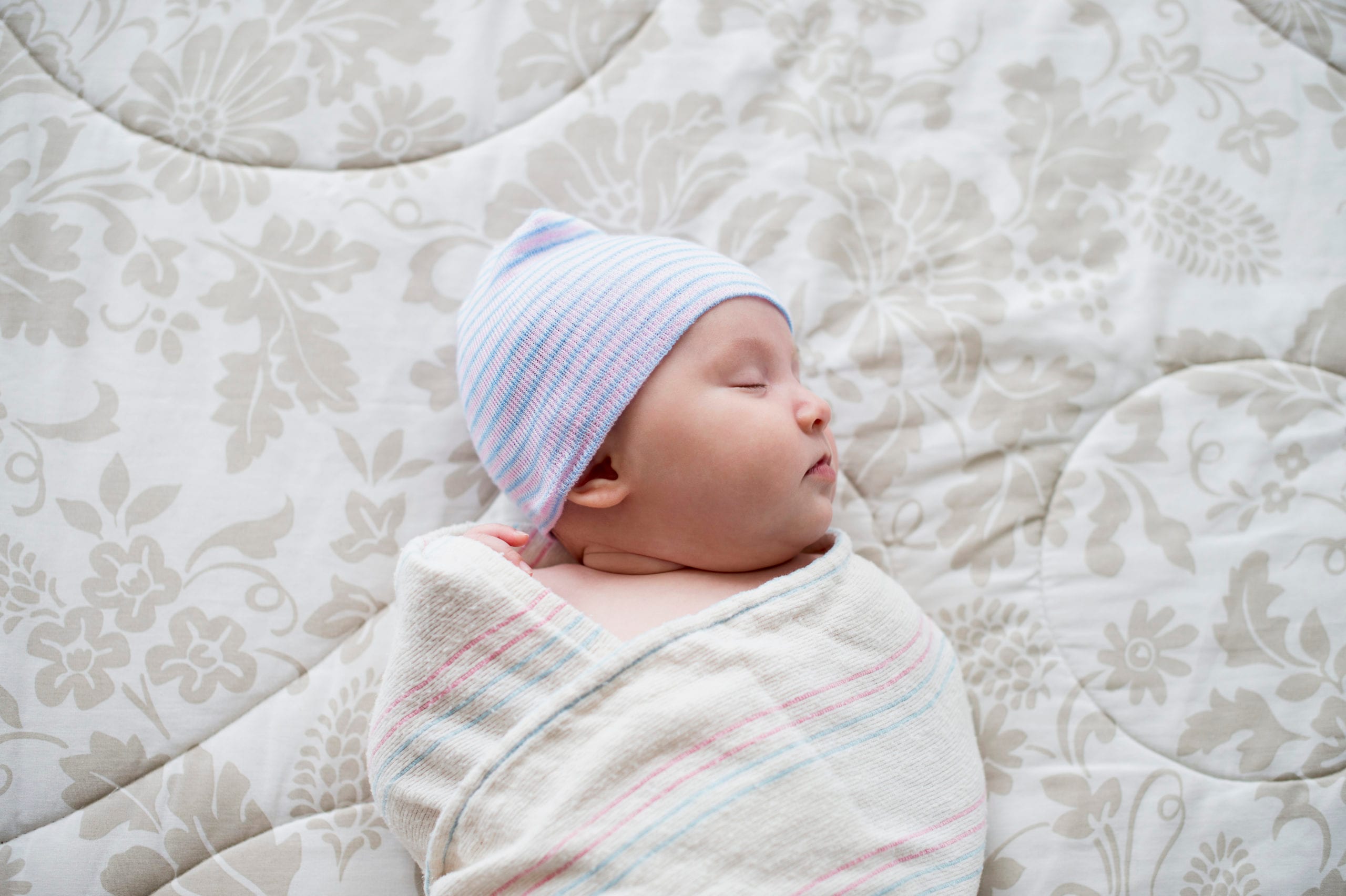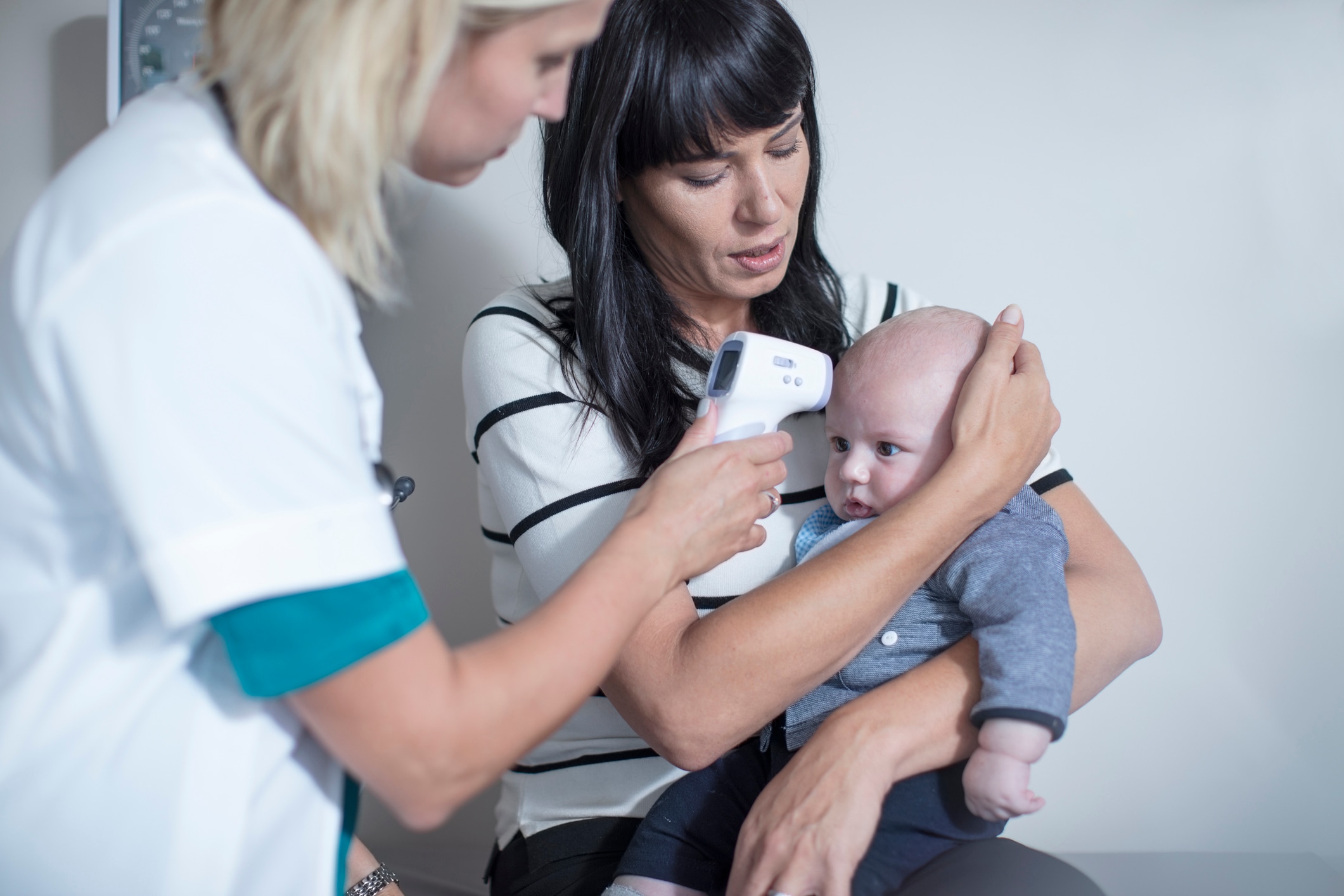For many families, the 2020-2021 school year was anything but normal — though, ironically, more normal than the latter half of the 2019-2020 school year. But what about this fall? What will Back to School 2021 have in store? While things are always in flux and school districts need to retain the ability to — using 2020’s word du jour — pivot at any given point, predictions for 2021, thankfully, look much less bleak than last year.
“As vaccination rates go up and case counts go down, the likelihood of virus transmission reduces substantially, so schools are likely to open full time and in person,” says Dr. Dale Bratzler, University of Oklahoma’s chief COVID officer at OU Health. In other words: For most, no more balancing virtual school and/or having the kids home every other day (or every day). In other words: Hallelujah.
“As vaccination rates go up and case counts go down, the likelihood of virus transmission reduces substantially, so schools are likely to open full time and in person.”
— DR. DALE BRATZLER, CHIEF COVID OFFICER AT OU HEALTH
Wondering what Back to School 2021 will look like? Here, experts weigh in.
Will kids be in school full time and in person for the 2021-2022 school year?
As Bratzler points out, yes. “If we continue on the current trajectory, kids will likely be in school full time come fall,” he says. “To put things in perspective, currently in Oklahoma, it’s estimated that about one per 1,000 people is infected, so the opportunity to encounter someone with COVID has come down considerably. That being said, we will have to monitor new cases carefully in the fall and winter months to see if the virus displays seasonal characteristics.”
While COVID case rates are currently trending in the right direction, parents should keep in mind that, ultimately, what their child’s school day looks like in the fall will be decided by their state and/or district, and any type of remote options will likely be dependent on resources available in a given district. That said, it’s worth noting that the Centers for Disease Control (CDC) is recommending schools fully reopen (more on this in a bit).
Back in May, New York City mayor Bill de Blasio said that schools would fully reopen for fall 2021, with no remote option for the nation’s largest public school system. A week prior, New Jersey Governor Phil Murphy made the same declaration.
Los Angeles Unified School District (LAUSD), the country’s second largest school district, announced in May that, while there will be the opportunity for all students to return to school in person, there also would be a remote option.
Following suit, Randi Weingarten, president of the 1.7 million-member American Federation of Teachers, is urging all schools to reopen “in person, five days a week.”
Will private schools and preschools have different rules?
The general guidelines being speculated are generally for public schools — and, therefore, private schools and preschools may take different routes.
“This past year, children who decided not to attend in person were still able to be delivered a curriculum from their teacher — and as we move to the 2021-2022 school year, I think it is important this option is given again,” says Cathy Makropoulis, Director of Montclare Children’s School in New York City. “Also, kids in preschool aren’t vaccinated, so some parents may still not feel comfortable sending their child to school … We’re ready to switch to a fully remote schedule if we need to at any time.”
Will masks and social distancing be required?
School safety precautions aren’t federally mandated, so whether children are required to wear masks and socially distance (and how far) will, again, be at the discretion of districts (as well as parents — some may want their child to continue wearing a mask, even if the school doesn’t require it).
New guidelines issued by the CDC in July recommend:
- Maintaining at least three feet physical distance in classrooms.
- Masking for anyone who isn’t fully vaccinated.
- Fully opening all schools in the fall even if all precautions can’t be taken.
“Students benefit from in-person learning, and safely returning to in-person instruction in the fall 2021 is a priority,” one of the key takeaways reads.
Even with the CDC’s masking recommendation, many schools may make the unilateral decision — as they did toward the end of the 2020-21 school year — to relax mask and social distancing requirements, thanks to the uptick in vaccination rates. In New York, Governor Andrew Cuomo required masks in school for the remainder of the last school year so long as students and teachers were indoors — despite dropping the indoor mask mandate for most venues once 70% of the state’s population had at least one dose of a vaccine. However, masks were no longer required when kids were outside at school.
“Outdoor activities are very safe in general, so there’s no need to wear a mask in most outdoor activities. However, despite mandates being lifted, we strongly encourage people who are not vaccinated to continue to wear a mask when around groups of people in indoor settings – such as the classroom.”
— DR. DALE BRATZLER, CHIEF COVID OFFICER AT OU HEALTH
School districts in other parts of the country, such as Florida and South Carolina, moved to make masks optional before the end of the 2020-2021 school year, and plan to continue into the 2021-2022 school year. And in Arkansas, a new law will make mask mandates illegal by the end of summer. Other states are still deciding how to proceed, and are flip-flopping along the way. In May, Governor Murphy announced that masks would “most likely” be required for New Jersey students in elementary and middle school. But at the end of June (after a protest), he said that the decision to wear masks would be up to each district. In Massachusetts, officials are still deciding about masks, but have said that physical distancing in schools will no longer be required.
While almost all districts’ precautions for the 2021 school year will be more relaxed than the past year, experts aren’t fully convinced it’s OK for schools to let their guards down completely.
“Outdoor activities are very safe in general, so there’s no need to wear a mask in most outdoor activities,” says Bratzler. “However, despite mandates being lifted, we strongly encourage people who are not vaccinated to continue to wear a mask when around groups of people in indoor settings – such as the classroom.”
Will schools relax their sick policies?
Before COVID, most parents didn’t bat an eyelash at sending their child to school with a small case of the sniffles. But once the pandemic hit, every sniff, cough and slight rise in temperature gave parents — and schools — pause. Will the same standards hold up for the fall? According to Dr. Larry Kociolek, pediatric infectious diseases specialist at Lurie Children’s Hospital in Chicago, it’ll depend on local numbers and transmission rates.
“Sending kids to school with the sniffles and any other symptoms that could be consistent with COVID carries risk of transmission of the disease.”
— DR. DALE BRATZLER, CHIEF COVID OFFICER AT OU HEALTH
“The ability to safely relax current COVID prevention policies, such as sick day protocols, in schools will primarily depend on the burden of COVID-19 in their communities, vaccination rates of staff and students and local and national public health guidance,” he says. “Communities with very low incidence and high rates of vaccination of staff and students, currently limited to students age 12 and up, have more flexibility to safely relax policies. Once younger school-aged children become eligible for vaccination, likely early fall, the ability to more broadly relax procedures will increase.”
As a general rule, though, Bratzler recommends erring on the side of caution when debating whether or not to send your sneezing child to school. “Sending kids to school with the sniffles and any other symptoms that could be consistent with COVID carries risk of transmission of the disease,” he explains. “We have already seen exposures in our healthcare system of employees who had symptoms coming to work and delaying testing.” However, Bratzler points out, parents may be able to mitigate some of the guesswork with at-home COVID quick tests, which are now available and “very inexpensive.”
How worried should parents be about COVID transmission in schools?
In March 2021, the CDC reported that, based on available data, “in-person learning in schools has not been associated with substantial community transmission.” A study of one school with 5,530 students and teachers found that, with mitigation measures in place, out of 191 COVID cases, seven — or 3.7% — were a result of in-school transmission.
But transmission, however small, does occur; and with some mitigation tactics, such as masking, potentially being taken away, they’ll likely continue to occur, even as case counts drop. “In K-12 schools, the majority of students will be unvaccinated until FDA authorizes a vaccine for the under-12 age group — so transmission is likely,” Bratzler says. “Also, since kids more commonly have asymptomatic infections, they may not get tested so we may not know the full extent of new cases in school settings.”
Can we expect COVID and or cold/flu spikes in fall?
Many experts — including Bratzler — are predicting a(nother) COVID spike come fall and, moreso, winter. “Many respiratory viruses are seasonal, including other common coronaviruses that infect humans and conditions like the common cold, so it is likely that as the weather gets cold and people move indoors for events — and kids return to the classroom — there will be outbreaks of respiratory illnesses,” Bratzler says. “I expect to see cluster outbreaks of COVID-19 in unvaccinated individuals, and without masks, we may well see influenza outbreaks also.”
How might remote options help during spikes?
Kociolek predicts that remote schooling, in schools and districts with the resources to offer it, may be a helpful option for kids who test positive for COVID. “Ideally, because time for exclusion from school due to COVID or exposure can be up to two weeks,” he explains, “remote options during this period will help prevent students from falling behind in school.”
Will kids be anxious about going back to school?
For many kids, it’s been more than a year since they’ve attended school in a “normal” way. So, will they be anxious about returning to a full-time schedule? Yes and no, says Vivian Mougios, a clinical psychologist and author of “Action Potential: The Secrets of Successful Learners.” “Anxiety in children comes in many forms, and there is no doubt that the pandemic has activated worry and anxiety in kids — however, they are far more resilient and adaptable when we can provide predictability and routine, such as a school environment,” she says.
“Anxiety in children comes in many forms, and there is no doubt that the pandemic has activated worry and anxiety in kids — however, they are far more resilient and adaptable when we can provide predictability and routine, such as a school environment.”
— VIVIAN MOUGIOS, CLINICAL PSYCHOLOGIST
Mougios goes on to say that, come fall, surging anxiety levels will most likely come from parents more than from kids. The reason? “Parents essentially separate, while children ‘attach’ to caregivers or other adults to expand their safety net,” she explains. “If children are anxious about going back to school, it is because they have not formed comfortable attachments yet. By contrast, parents are not directly involved in this attachment process — they leave and go about their day — so they are essentially separating from their children.”
Will kids experience learning delays or setbacks?
It’s a sad fact, but one of the worst byproducts of the pandemic is the toll it took on kids’ education. “Setbacks in academic achievement, both related to a virtual teaching environment and stressors of the pandemic, have already been identified in children,” Kociolek says, adding that “this is disproportionately impacting children of color and children from poorer communities.”
Rashelle Chase, content architect for KinderCare’s education team, explains that, next to the effect COVID has taken on kids’ social and emotional needs, the biggest concern she’s heard from parents is the role it’s played in “learning loss.” However, she adds, from an academic standpoint, it may not be as bad as some think.
“Adults need to remember that the standards and assessments we use to measure children’s learning are all tools that weren’t developed with the year 2020 or a global pandemic in mind,” she says. “The learning and growth that occurred this past year will look different from child to child, but it’s still there. For some, academic growth may have taken a back seat to social and emotional growth. For others, math or science may have fallen off while awareness of social issues increased.” Put another way: It’s all about perspective.
How can parents best prepare their children for the 2021-2022 school year?
According to Chase, one of the best things parents can do to prepare kids for the upcoming school year is to give them a normal summer (with a reduction in the screen time they likely gained during the pandemic). “Lots of outdoor time, lots of time up and moving, safely reconnecting with other children and plenty of trips to the library will all help kids reacclimate to the social world and will help decrease the stress that may come with a return to full-time school,” she says. “Rather than focusing on what was lost or not learned over the last year, consider what was gained and what new skills and perspectives your child developed while keeping in mind that academics can be caught up and most kids will have had a similar experience of an unconventional learning and interrupted relationships.”
